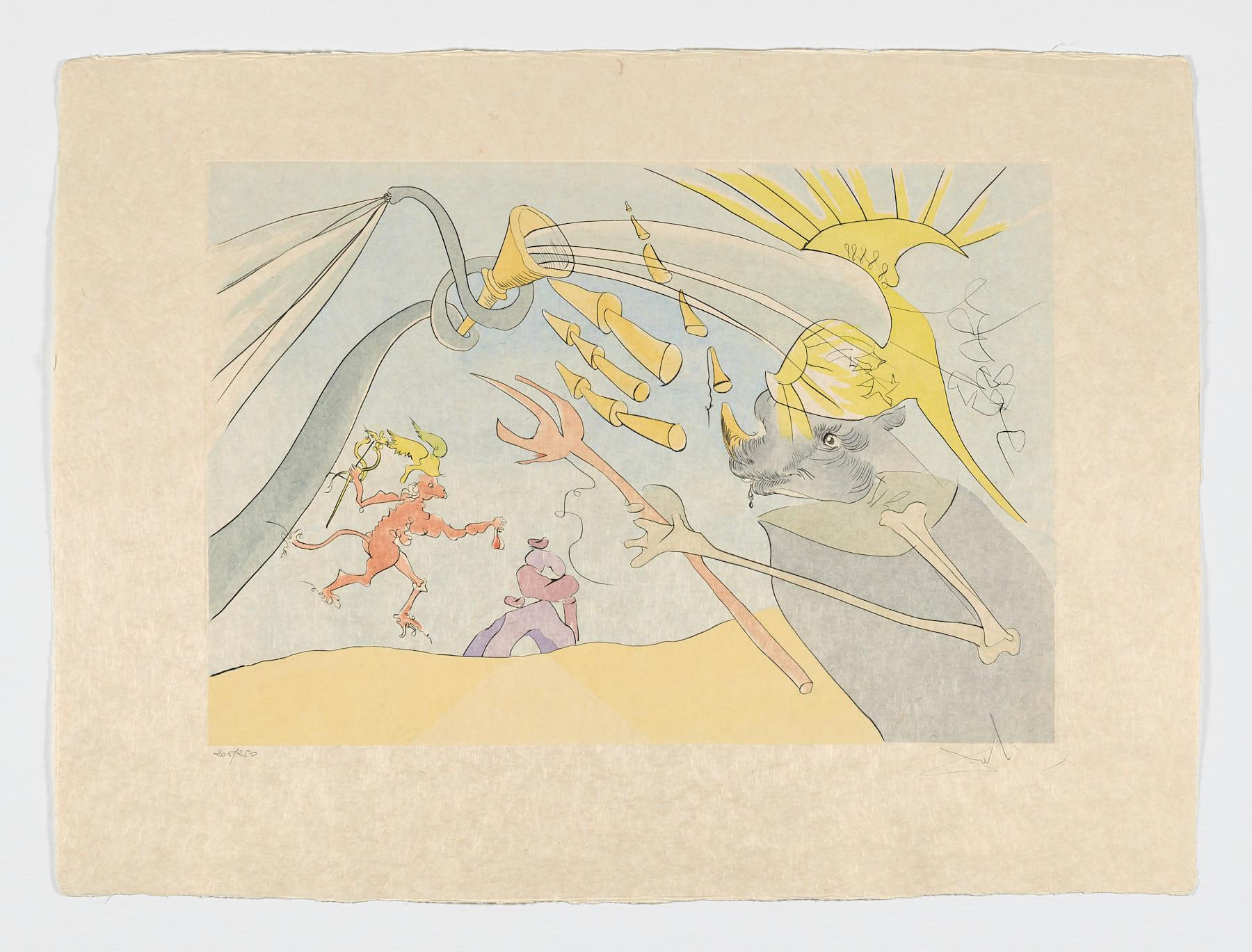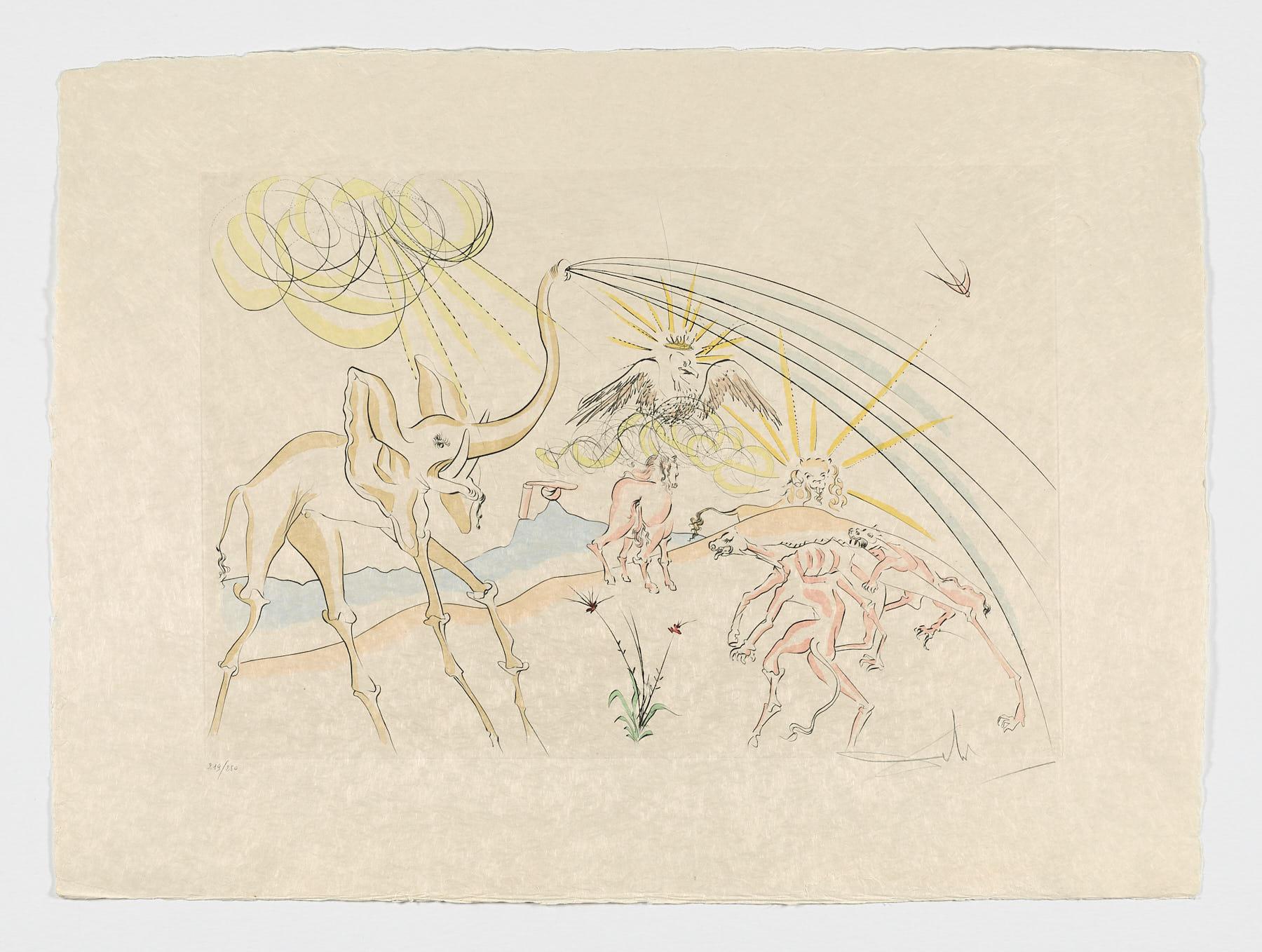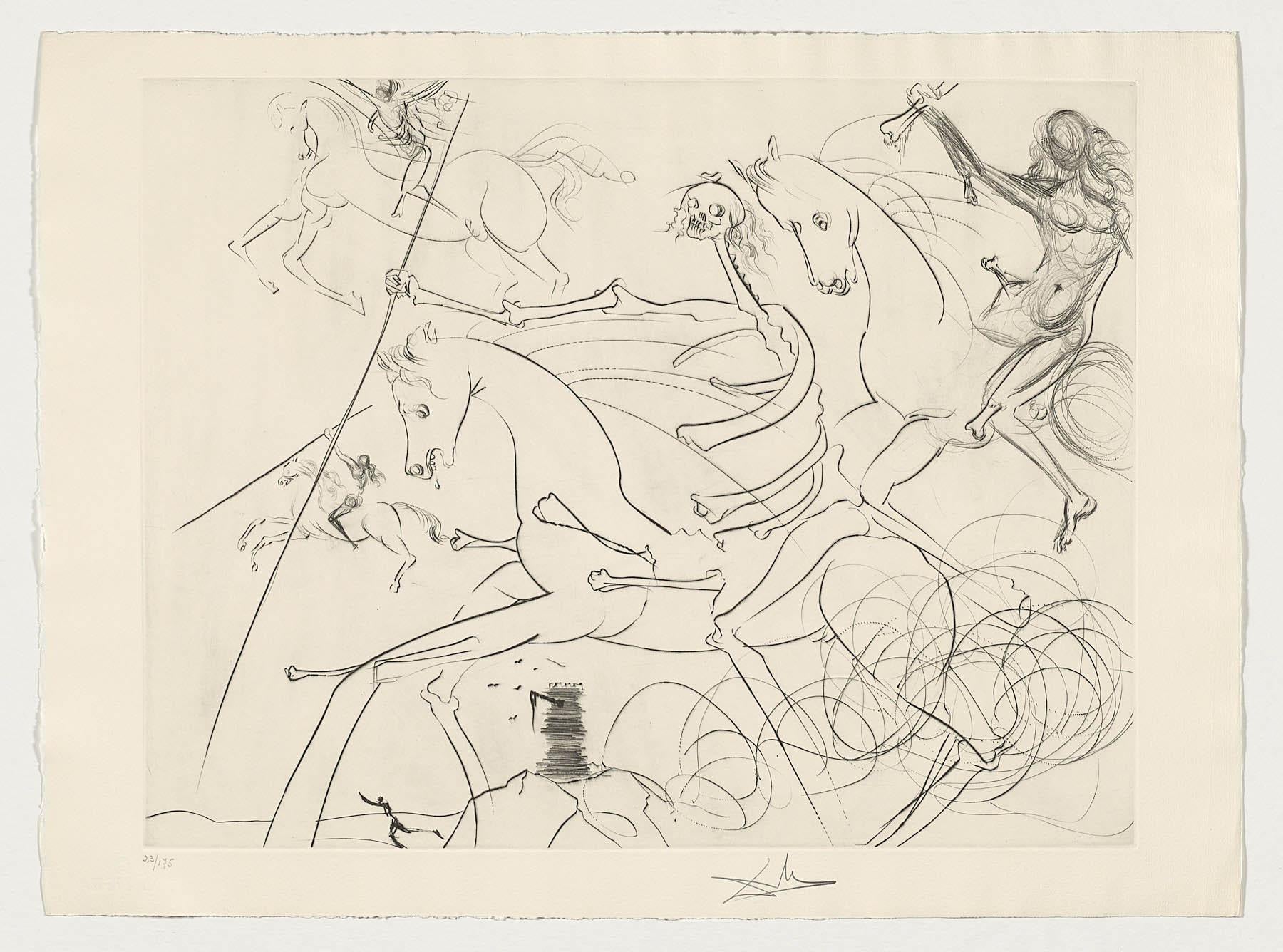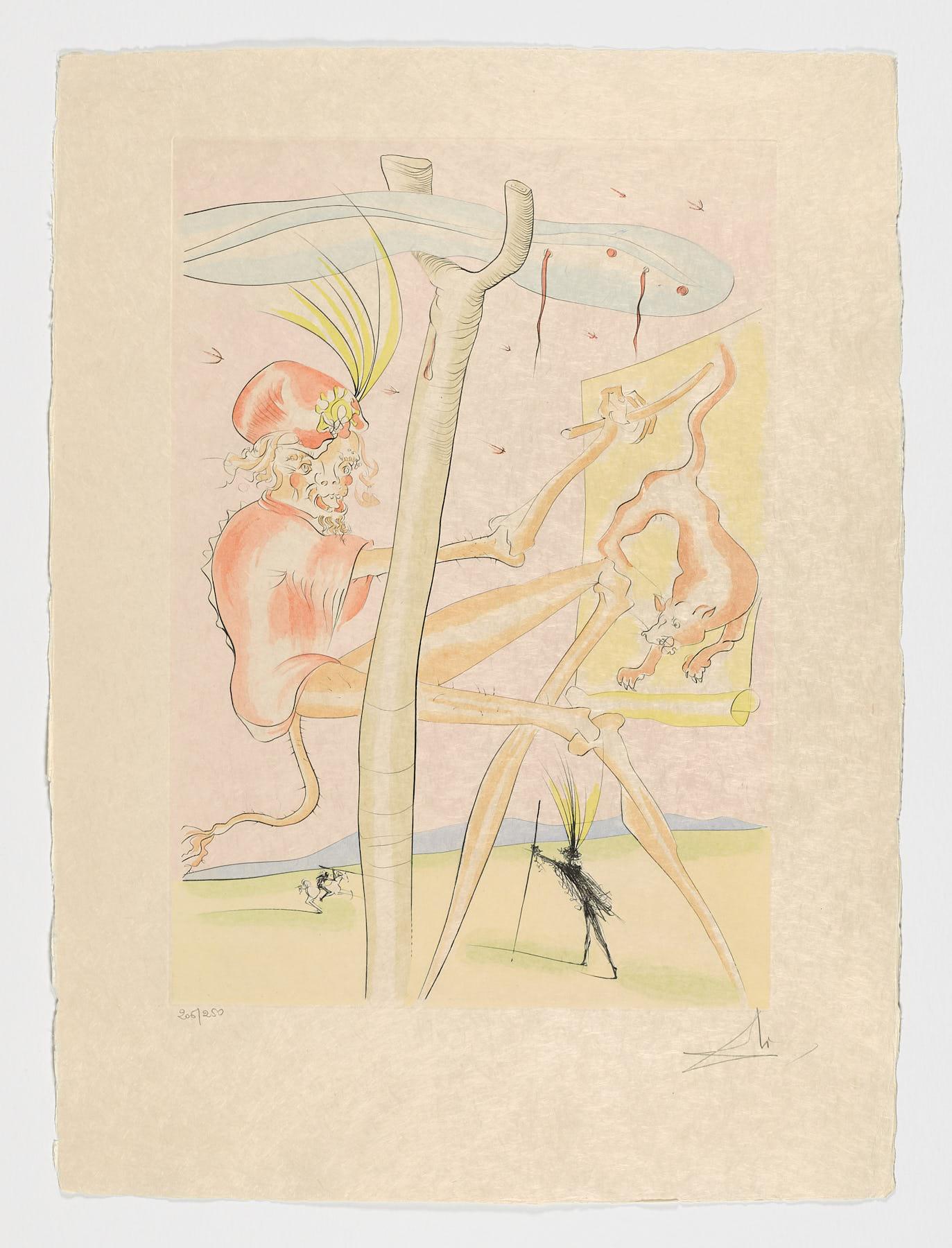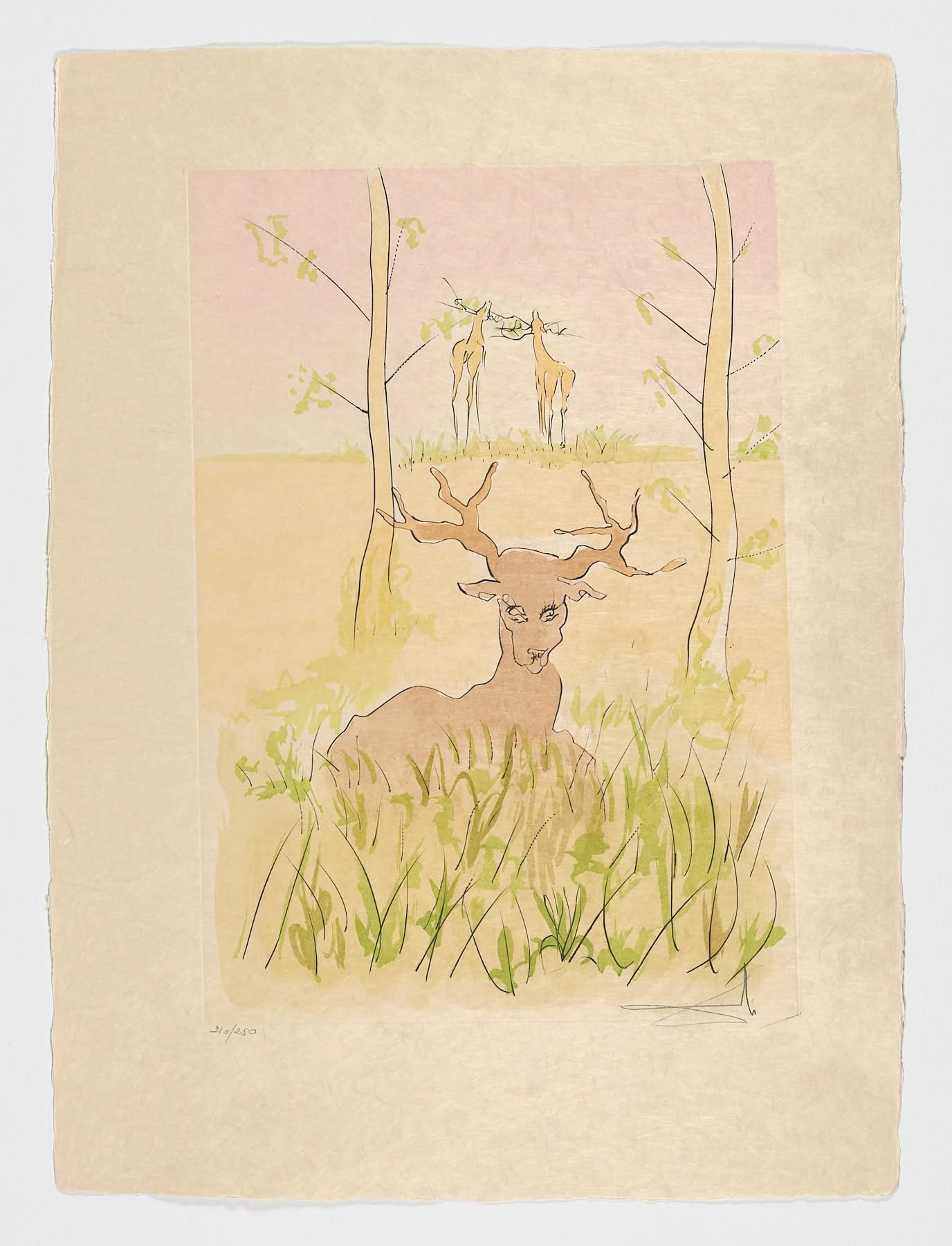Items Similar to "Warthog, " Drypoint Etching by Leonard Baskin, 1969
Want more images or videos?
Request additional images or videos from the seller
1 of 7
Leonard Baskin"Warthog, " Drypoint Etching by Leonard Baskin, 19691969
1969
About the Item
This drypoint etching was created by American artist Leonard Baskin. Baskin is well known for his somewhat grotesque, intricate, surreal drawings and natural subject matter. This etching is signed and numbered AP in pencil. The plate size is 17 x 23.5 inches, and the paper measures 22 x 30 inches. It is in excellent condition.
- Creator:Leonard Baskin (1922-2000, American)
- Creation Year:1969
- Dimensions:Height: 22 in (55.88 cm)Width: 30 in (76.2 cm)
- Medium:
- Movement & Style:
- Period:
- Framing:Framing Options Available
- Condition:
- Gallery Location:Long Island City, NY
- Reference Number:1stDibs: LU4662055413
About the Seller
4.8
Platinum Seller
These expertly vetted sellers are 1stDibs' most experienced sellers and are rated highest by our customers.
Established in 1979
1stDibs seller since 2014
2,695 sales on 1stDibs
Typical response time: <1 hour
- ShippingRetrieving quote...Ships From: Long Island City, NY
- Return PolicyA return for this item may be initiated within 7 days of delivery.
More From This SellerView All
- St Georges et le Dragon, Surrealist Etching by Salvador Dali 1974By Salvador DalíLocated in Long Island City, NYSalvador Dali was a Spanish painter, printmaker, and sculptor heralded as the father of surrealism. This piece features the fabled story of Saint George gallantly slaying a dragon. T...Category
1960s Surrealist Animal Prints
MaterialsStencil, Etching
- Le Picador, Surrealist Lithography by Salvador DaliBy Salvador DalíLocated in Long Island City, NYA picador rides in on a horse, lance in hand, to enrage a bull we cannot see. The horse theme was frequently used by Dali throughout his career. The horse is seen as a symbol of beau...Category
1970s Surrealist Animal Prints
MaterialsLithograph
- Le Cheval du Printemps (The Horse of Spring), Lithograph by Salvador DaliBy Salvador DalíLocated in Long Island City, NYA close portrait of a horse wearing a laurel crown with the rays of the sun emanating from behind its head. The horse theme was frequently used by Dali throughout his career. The hor...Category
1970s Surrealist Animal Prints
MaterialsLithograph
- La Licorne (The Unicorn), Surrealist Lithograph by Salvador DaliBy Salvador DalíLocated in Long Island City, NYA woman with flowing gold hair kneels before a unicorn. The horse theme was frequently used by Dali throughout his career. The horse is seen as a symbol of beauty and elegance as wel...Category
1970s Surrealist Animal Prints
MaterialsLithograph
- L'Ouraboros, Surrealist Lithograph on Parchment by Salvador DaliBy Salvador DalíLocated in Long Island City, NYDalí's Ouroboros is more naturalistic than his other prints in Alchimie des Philosophes, and its features are similar to an eel or sea serpent. It is cut into many pieces, though the...Category
1970s Surrealist Animal Prints
MaterialsLithograph, Parchment Paper
- Caballero, Surrealist Lithograph by Salvador DaliBy Salvador DalíLocated in Long Island City, NYArtist: Salvador Dali Title: Caballero Year: 1968 Medium: Lithograph on Arches, signed and numbered in pencil Edition: 75/125 Image: 30.25 x 22 inches Paper Size: 40 x 32 inches Fram...Category
1960s Surrealist Figurative Prints
MaterialsLithograph
You May Also Like
- Spanish Artist hand signed limited edition original art print drypoint n7By Salvador DalíLocated in Miami, FLSalvador Dali (Spain, 1904-1989) 'La Cour du Lion', 1974 Serie: Le Bestiaire de La Fontaine dry point, aquatint on japanese paper 30.6 x 22.7 in. (77.5 x 57.5 cm.) Edition of 250 Unframed ID: DAL2001-007 Hand-signed by author It appears reviewed in the catalog raisonné: The official catalog of the graphic works of Salvador Dalí. Albert Field. Page: 2/93. Nr. 74-1 J. ______________________________________________________ Salvador Felipe Jacinto Dalí i Domènech was a Spanish painter, sculptor, engraver, set designer and writer of the 20th century. An artist associated with surrealism, he is one of the most important figures in 20th century art, representing the archetype of the spectacular contemporary multifaceted artist. He develops his creative activity in various fields through the most diverse cultural formulas: painting, written media, performing arts, cinema, or public appearances in the press, radio, cinema, advertising, television, etc. Master of the most refined pictorial technique, especially drawing, along with various aesthetic languages - from impressionism, cubism, purism or late ultraism with Dadaist edges to the most radical surrealism, hyperrealism, pop-art or art optical—, will absorb every influence that is useful to build its own and personal language, halfway between technical tradition and thematic avant-garde. His paranoid-critical method is his main contribution to the surrealist movement and to the history of art as a new creative model with which Dalí's theories acquire theoretical entity - thanks to the successive interpretations that the Empordà artist made of his readings of Dalí's work. Sigmund Freud—and practice, applying it as a revealing liquid of images that can be represented plastically through multiple images, anamorphisms, relational mirages, irrational and heterogeneous symbolic images, pseudohallucinations, childhood memories, atavisms, obsessive ideas, etc., and recreating a polyphonic method capable of critically relating any visual or sensitive experience. With his method, Dalí makes paranoid delirium a whole mode of expression of an art that introduces us to the concrete irrationality that inhabits every creative process, constructing not only his works, but also his own character. as an artist. In Dalí, the relationship between his work and his personal history becomes evident. Much of the most significant biographical facts for the artist are implicitly or explicitly present in the content of his work and are the explanation of his complex and contradictory personality. In 1910, at the age of 6, he was enrolled by his father in the Hispano-French school of the Immaculate Conception of Figueres, where he learned French, his future language of culture. Dalí's first contact with Impressionism occurred in 1916, when he spent some time on the outskirts of Figueres, specifically at the Molí de la Torre estate, property of the Pichot family (intellectuals and artists), where he was the collection of the painter Ramón Pichot. In 1919 he participated for the first time in a group exhibition in the halls of the Societat de Concerts, and with a group of friends from the institute founded the magazine Studium, in which he published his first writings. A year later he moved to Madrid to study at the School of Fine Arts. In 1922 he won his first prize at the Concurs-exposició d'obres d'art originals d'students, held at the Galeries Dalmau (Barcelona). This same year he attended the School of Painting, Sculpture and Engraving in Madrid (Royal Academy of Fine Arts of San Fernando), and lived in the Student Residence, where he became friends with prominent personalities such as Luis Buñuel, Federico García Lorca, Pedro Garfias , Eugenio Montes, or Pepín Bello. However, a year later he was expelled from the Academy for his rebellious and revolutionary character, accused of leading a protest. It would be in 1927 when his surrealist period began, after having traveled to the Netherlands and France, meeting Flemish painters and Picasso. In Paris itself, in 1929, through Joan Miró, he came into contact with a group of surrealists headed...Category
1970s Surrealist Prints and Multiples
MaterialsDrypoint, Paper, Aquatint
- Spanish Artist hand signed limited edition original art print drypoint n6By Salvador DalíLocated in Miami, FLSalvador Dali (Spain, 1904-1989) 'L’Elephant et le singe de Jupiter', 1974 Serie: Le Bestiaire de La Fontaine dry point, aquatint on japanese paper 22.9 x 30.8 in. (58 x 78 cm.) Edition of 250 Unframed ID: DAL2001-006 Hand-signed by author It appears reviewed in the catalog raisonné: The official catalog of the graphic works of Salvador Dalí. Albert Field. Page: 2/93. Nr. 74-1 B. ______________________________________________________ Salvador Felipe Jacinto Dalí i Domènech was a Spanish painter, sculptor, engraver, set designer and writer of the 20th century. An artist associated with surrealism, he is one of the most important figures in 20th century art, representing the archetype of the spectacular contemporary multifaceted artist. He develops his creative activity in various fields through the most diverse cultural formulas: painting, written media, performing arts, cinema, or public appearances in the press, radio, cinema, advertising, television, etc. Master of the most refined pictorial technique, especially drawing, along with various aesthetic languages - from impressionism, cubism, purism or late ultraism with Dadaist edges to the most radical surrealism, hyperrealism, pop-art or art optical—, will absorb every influence that is useful to build its own and personal language, halfway between technical tradition and thematic avant-garde. His paranoid-critical method is his main contribution to the surrealist movement and to the history of art as a new creative model with which Dalí's theories acquire theoretical entity - thanks to the successive interpretations that the Empordà artist made of his readings of Dalí's work. Sigmund Freud—and practice, applying it as a revealing liquid of images that can be represented plastically through multiple images, anamorphisms, relational mirages, irrational and heterogeneous symbolic images, pseudohallucinations, childhood memories, atavisms, obsessive ideas, etc., and recreating a polyphonic method capable of critically relating any visual or sensitive experience. With his method, Dalí makes paranoid delirium a whole mode of expression of an art that introduces us to the concrete irrationality that inhabits every creative process, constructing not only his works, but also his own character. as an artist. In Dalí, the relationship between his work and his personal history becomes evident. Much of the most significant biographical facts for the artist are implicitly or explicitly present in the content of his work and are the explanation of his complex and contradictory personality. In 1910, at the age of 6, he was enrolled by his father in the Hispano-French school of the Immaculate Conception of Figueres, where he learned French, his future language of culture. Dalí's first contact with Impressionism occurred in 1916, when he spent some time on the outskirts of Figueres, specifically at the Molí de la Torre estate, property of the Pichot family (intellectuals and artists), where he was the collection of the painter Ramón Pichot. In 1919 he participated for the first time in a group exhibition in the halls of the Societat de Concerts, and with a group of friends from the institute founded the magazine Studium, in which he published his first writings. A year later he moved to Madrid to study at the School of Fine Arts. In 1922 he won his first prize at the Concurs-exposició d'obres d'art originals d'students, held at the Galeries Dalmau (Barcelona). This same year he attended the School of Painting, Sculpture and Engraving in Madrid (Royal Academy of Fine Arts of San Fernando), and lived in the Student Residence, where he became friends with prominent personalities such as Luis Buñuel, Federico García Lorca, Pedro Garfias , Eugenio Montes, or Pepín Bello. However, a year later he was expelled from the Academy for his rebellious and revolutionary character, accused of leading a protest. It would be in 1927 when his surrealist period began, after having traveled to the Netherlands and France, meeting Flemish painters and Picasso. In Paris itself, in 1929, through Joan Miró, he came into contact with a group of surrealists headed...Category
1970s Surrealist Prints and Multiples
MaterialsDrypoint, Aquatint, Paper
- Spanish Artist hand signed limited edition original art print drypoint n14By Salvador DalíLocated in Miami, FLSalvador Dali (Spain, 1904-1989) 'Les Animaux Malades de la Peste', 1974 Serie: Le Bestiaire de La Fontaine dry point, aquatint on japanese paper 22.9 x 30.4 in. (58 x 77 cm.) Editio...Category
1970s Surrealist Prints and Multiples
MaterialsDrypoint, Paper, Aquatint
- Spanish Artist hand signed limited edition original art print drypoint n16By Salvador DalíLocated in Miami, FLSalvador Dali (Spain, 1904-1989) 'Jinete apocalíptico', 1974 dry point, etching on paper 22.3 x 30.4 in. (56.5 x 77 cm.) Edition of 175 Unframed ID: DAL2001-016 Hand-signed by author ______________________________________________________ Salvador Felipe Jacinto Dalí i Domènech was a Spanish painter, sculptor, engraver, set designer and writer of the 20th century. An artist associated with surrealism, he is one of the most important figures in 20th century art, representing the archetype of the spectacular contemporary multifaceted artist. He develops his creative activity in various fields through the most diverse cultural formulas: painting, written media, performing arts, cinema, or public appearances in the press, radio, cinema, advertising, television, etc. Master of the most refined pictorial technique, especially drawing, along with various aesthetic languages - from impressionism, cubism, purism or late ultraism with Dadaist edges to the most radical surrealism, hyperrealism, pop-art or art optical—, will absorb every influence that is useful to build its own and personal language, halfway between technical tradition and thematic avant-garde. His paranoid-critical method is his main contribution to the surrealist movement and to the history of art as a new creative model with which Dalí's theories acquire theoretical entity - thanks to the successive interpretations that the Empordà artist made of his readings of Dalí's work. Sigmund Freud—and practice, applying it as a revealing liquid of images that can be represented plastically through multiple images, anamorphisms, relational mirages, irrational and heterogeneous symbolic images, pseudohallucinations, childhood memories, atavisms, obsessive ideas, etc., and recreating a polyphonic method capable of critically relating any visual or sensitive experience. With his method, Dalí makes paranoid delirium a whole mode of expression of an art that introduces us to the concrete irrationality that inhabits every creative process, constructing not only his works, but also his own character. as an artist. In Dalí, the relationship between his work and his personal history becomes evident. Much of the most significant biographical facts for the artist are implicitly or explicitly present in the content of his work and are the explanation of his complex and contradictory personality. In 1910, at the age of 6, he was enrolled by his father in the Hispano-French school of the Immaculate Conception of Figueres, where he learned French, his future language of culture. Dalí's first contact with Impressionism occurred in 1916, when he spent some time on the outskirts of Figueres, specifically at the Molí de la Torre estate, property of the Pichot family (intellectuals and artists), where he was the collection of the painter Ramón Pichot. In 1919 he participated for the first time in a group exhibition in the halls of the Societat de Concerts, and with a group of friends from the institute founded the magazine Studium, in which he published his first writings. A year later he moved to Madrid to study at the School of Fine Arts. In 1922 he won his first prize at the Concurs-exposició d'obres d'art originals d'students, held at the Galeries Dalmau (Barcelona). This same year he attended the School of Painting, Sculpture and Engraving in Madrid (Royal Academy of Fine Arts of San Fernando), and lived in the Student Residence, where he became friends with prominent personalities such as Luis Buñuel, Federico García Lorca, Pedro Garfias , Eugenio Montes, or Pepín Bello. However, a year later he was expelled from the Academy for his rebellious and revolutionary character, accused of leading a protest. It would be in 1927 when his surrealist period began, after having traveled to the Netherlands and France, meeting Flemish painters and Picasso. In Paris itself, in 1929, through Joan Miró, he came into contact with a group of surrealists headed...Category
1970s Surrealist Prints and Multiples
MaterialsPaper, Drypoint, Etching
- Spanish Artist hand signed limited edition original art print drypoint n9By Salvador DalíLocated in Miami, FLSalvador Dali (Spain, 1904-1989) 'Le Singe et le Léopard', 1974 Serie: Le Bestiaire de La Fontaine dry point, aquatint on japanese paper 30.8 x 22.7 in. (78 x 57.5 cm.) Edition of 25...Category
1970s Surrealist Prints and Multiples
MaterialsDrypoint, Paper, Aquatint
- Spanish Artist hand signed limited edition original art print drypoint n11By Salvador DalíLocated in Miami, FLSalvador Dali (Spain, 1904-1989) 'La Cerf Malade', 1974 Serie: Le Bestiaire de La Fontaine dry point, aquatint on japanese paper 30.6 x 22.9 in. (77.5 x 58 cm.) Edition of 250 Unfram...Category
1970s Surrealist Prints and Multiples
MaterialsDrypoint, Paper, Aquatint
Recently Viewed
View AllMore Ways To Browse
Surrealist Etching
Grotesque Print
Vintage Grotesque
Surreal Etching
Baskin Leonard
Baskin Signed Print
Leonard Baskin Signed Prints
Mexican Plates Set
Antique Alaska
Rodrigue Signed
Francis Orpen Morris
Lydon Bird Prints
Elephant Lithograph
Rodrigue Blue
Vintage Jungle Prints
Vintage Jungle Print
Alexander Lydon
Small Animal Lithographs

